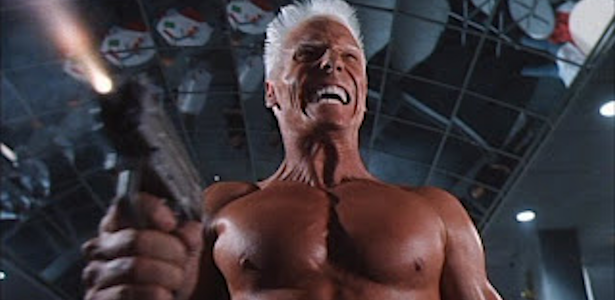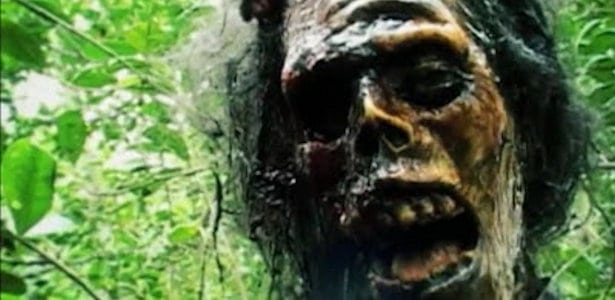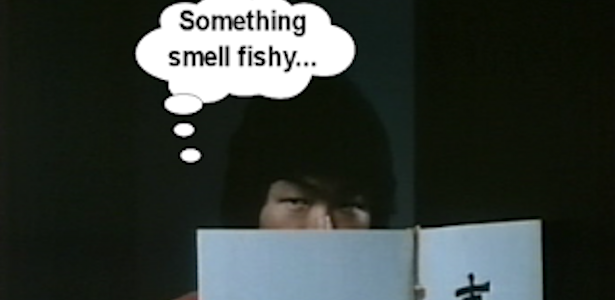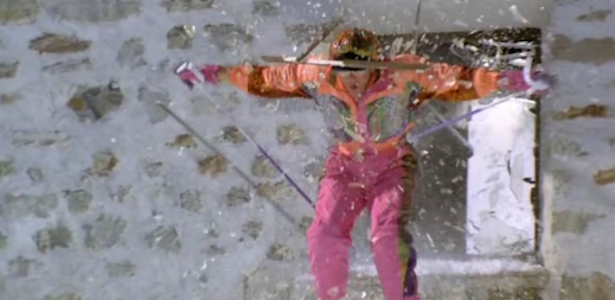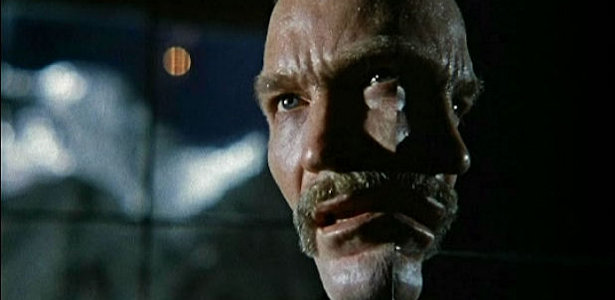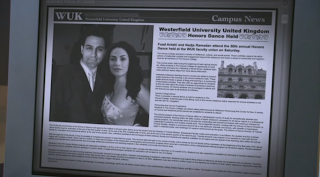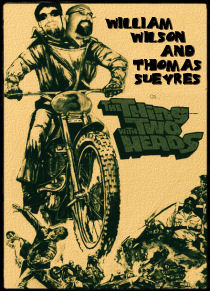“When things get a little crazy, someone always remarks, ‘Must be a full moon tonight.’” - Dr. Anton Mordrid
With the publishing of IT CAME FROM THE VIDEO AISLE just weeks away, it is amusing that this film anniversary popped up when I was doing some research. Although Full Moon Entertainment has been around (in various fashions) for nearly 30 years, it is still hard for me to process that one of their films is turning 25 years old. Yet this is the case as everyone’s favorite “Master of the Unknown” turns a quarter of a century old this month.
Like most Band productions of this era, there is a long history behind the eventual product. DOCTOR MORDRID’s roots actually started growing in Charles Band’s previous company, Empire Pictures. Band was never mum about his love of comic books and by 1986 he steered his first company in that direction in a big way with the hiring of comic icon Jack Kirby. The legendary pensman signed on to tackle two very comic book oriented projects in MINDMASTER and DOCTOR MORTALIS. Advertised heavily in Variety, both projects never saw fruition and Kirby’s legacy with Empire ended with some nifty trade ads.
That said, when Band started his new company, Full Moon Entertainment, he brought the concept with him. To flesh out this character, Band looked to the typewriter of C. Courtney Joyner. The screenwriter established himself by co-writing the terrific anthology FROM A WHISPER TO A SCREAM (1987) and had previously written PRISON (1987), which Band’s Empire had a hand in. Two other elements probably factored into Joyner’s selection. One: He was a bonafide comic book fan who understood what Band wanted. Two: He had just written PUPPET MASTER III (1991), which had been the studio’s biggest success to date. Joyner was the ideal person to bring this “prescription of movie magic” (as the Videozone called MORDRID) to life. Joyner created the character of Dr. Anton Mordrid, a wizard who guards Earth while under the tutelage of the Monitor. His skills are put to the test when outlaw sorcerer Kabal begins a series of thefts to allow him to open Hell.
MORDRID saw Charles Band sharing directing chores with his father Albert (this was the senior Band’s first outing for Full Moon). In regard to casting, they wisely chose Empire vet and fan favorite Jeffrey Combs to essay the lead doctor and veteran b-movie bad guy Brian Thompson as the villain. Beginning principal photography in January 1992, MORDRID had one of the largest Full Moon budgets to date (an estimated $2,000,000). As the VJ boss Thomas Sueyres mentions in his VIDEO AISLE chapter on MORDRID, the expense certainly makes it onto the screen as MORDRID is one of the more lavish films from that era.
Production was rather quick by Hollywood standards and the film was ready to screen by June 1992. This is pretty amazing considering David Allen Productions was working on some really fantastic effects pieces (the most memorable being the dinosaur skeleton brawl in the film’s finale). The film was given a rating in late June as it received a R-rating (for “language and a scene of sexuality” according to the MPAA notes posted in Variety on June 18, 1992). Although it did carry the restricted rating, MORDRID was perhaps not fitting of this distinction. It lacked the bloody horrors of previous Full Moon films such as PUPPET MASTER or SUBSPECIES. In fact, MORDRID is relatively tame in comparison and is more in the vein of Band’s comic book ideal.
MORDRID was an instant success for Full Moon when it hit video shelves in September 1992, with the VHS on every Blockbuster shelf in America. The film was such a success that there were plans for a number of sequels for the further adventures of Dr. Anton Mordrid in the ever expanding Full Moon portfolio. In fact, Full Moon had hired a certain screenwriting duo to pen DOCTOR MORDRID 2 and 3 and they complete a full draft of MORDRID 2 that was well received within the company. Also, a director was in pre-production on the second film when the company’s deal with Paramount abruptly ended. Who were these mysterious folks? Well, you’ll have to buy the book to find out.
With the publishing of IT CAME FROM THE VIDEO AISLE just weeks away, it is amusing that this film anniversary popped up when I was doing some research. Although Full Moon Entertainment has been around (in various fashions) for nearly 30 years, it is still hard for me to process that one of their films is turning 25 years old. Yet this is the case as everyone’s favorite “Master of the Unknown” turns a quarter of a century old this month.
Like most Band productions of this era, there is a long history behind the eventual product. DOCTOR MORDRID’s roots actually started growing in Charles Band’s previous company, Empire Pictures. Band was never mum about his love of comic books and by 1986 he steered his first company in that direction in a big way with the hiring of comic icon Jack Kirby. The legendary pensman signed on to tackle two very comic book oriented projects in MINDMASTER and DOCTOR MORTALIS. Advertised heavily in Variety, both projects never saw fruition and Kirby’s legacy with Empire ended with some nifty trade ads.
Variety mentions for DOCTOR MORTALIS:
Production was rather quick by Hollywood standards and the film was ready to screen by June 1992. This is pretty amazing considering David Allen Productions was working on some really fantastic effects pieces (the most memorable being the dinosaur skeleton brawl in the film’s finale). The film was given a rating in late June as it received a R-rating (for “language and a scene of sexuality” according to the MPAA notes posted in Variety on June 18, 1992). Although it did carry the restricted rating, MORDRID was perhaps not fitting of this distinction. It lacked the bloody horrors of previous Full Moon films such as PUPPET MASTER or SUBSPECIES. In fact, MORDRID is relatively tame in comparison and is more in the vein of Band’s comic book ideal.
Storyboards from DOCTOR MORDRID:
MORDRID was an instant success for Full Moon when it hit video shelves in September 1992, with the VHS on every Blockbuster shelf in America. The film was such a success that there were plans for a number of sequels for the further adventures of Dr. Anton Mordrid in the ever expanding Full Moon portfolio. In fact, Full Moon had hired a certain screenwriting duo to pen DOCTOR MORDRID 2 and 3 and they complete a full draft of MORDRID 2 that was well received within the company. Also, a director was in pre-production on the second film when the company’s deal with Paramount abruptly ended. Who were these mysterious folks? Well, you’ll have to buy the book to find out.




